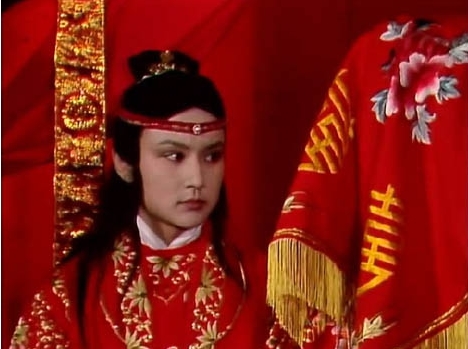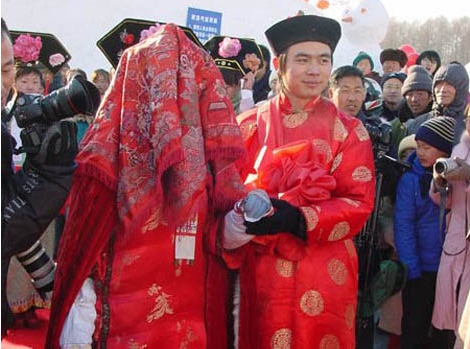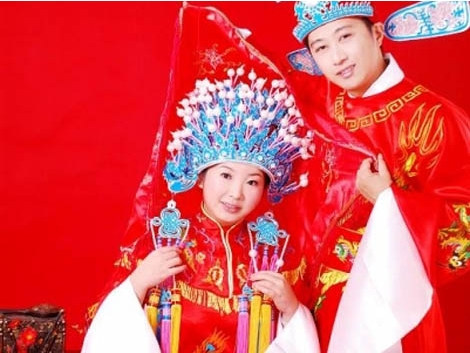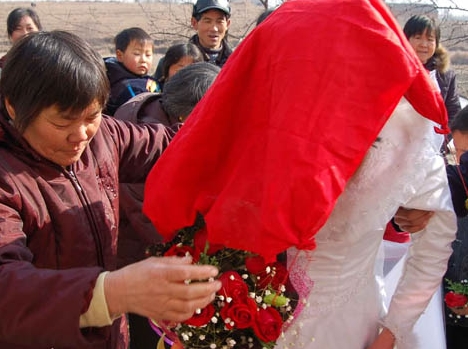
In ancient China, a bride was supposed to wear a red veil made of a piece of exquisite red silk cloth at her wedding. The veil was meant to be removed by the bridegroom in the bridal chamber.

The earliest forms of women's veils appeared in the Qi Dynasty of the Northern and Southern Dynasties for keeping cold away. Such a veil covered little more than the top of the head. In the Tang Dynasty, the veil evolved into a hat with a piece of curtain-like cloth stretching from the head to the shoulders for hiding the face. According to legend, in the Kaiyuan and Tianbao Periods of the Tang Dynasty, Li Longji, Emperor Ming of Tang, ordered court ladies to cover their heads with a piece of thin gauze, an additional ornamental veil to the hat with a piece of curtain-like cloth in the early Tang Dynasty. That was part of the emperor's measures to break old traditions.

From the later Jin Dynasty to the Yuan Dynasty, wearing a veil was popular among the people and also became an entrenched practice for brides as a way of jazzing up the joyous atmosphere. As red symbolizes happiness in Chinese culture, bridal veils are all red.

But why do brides wear veils? The answer lies in a legend. According to Duyi Zhi of the Tang Dynasty, at the beginning of the universe, Fuxi and his sister Nvwa were the only human beings in the world. To procreate more humans, the brother and sister wished to become husband and wife, but felt shy about it. So they went to the top of the Kunlun Mountain and prayed: "If Heaven allows us to be husband and wife, please let the clouds gather; if not, please let them scatter." When they barely finished praying, the clouds got closer and closer to one another and finally gathered together. So Nvwa and Fuxi got married. Still feeling shy, Nvwa made a fan with grass to hide her face. In Chinese, the word (shan, fan) means a cover or a veil. But a fan is not as light and beautiful as a silk veil. So the veil gradually replaced the fan to hide the bride's face.





